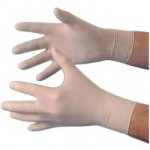 Vital capacity measurement
Vital capacity measurement

In order to assess the functional state of the respiratory system, the vital capacity of the lungs is measured using a special device - a spirograph.
Vital capacity (VC) is a value equal to the volume of air that the patient can exhale after taking the deepest possible breath. VC characterizes the state of the external respiration apparatus, allows you to assess the physical development of children and adolescents, to diagnose various diseases.
The procedure for determining the vital capacity of the lungs is called spirography . Manipulation requires the nurse to have knowledge about the device and the principles of operation of the apparatus, as well as the skills of examining patients.
Equipment for measuring VC
- Spirometer
- Nose clip.
- Clean mouthpieces.
- Sterile tweezers.
- Gauze sterile wipes.
- Disinfectant containers.
- Accounting documentation for manipulation.
Sequencing
- We inform the patient about the upcoming procedure, obtain consent for its implementation.
- We wash our hands, put on gloves.
- We turn on the device in the network.
- We fix the mouthpiece on the spirometer.
- We rotate the movable part of the spirometer until the arrow aligns with the zero division of the scale, if any.
- We pass the spirometer to the patient, making sure that his fingers do not block the spirometer fan.
- We put a clothespin on the patient’s nose, ask him to turn his head to the side and take a deep breath, then exhale completely.
- We ask the patient to take a deep breath again, close the mouthpiece tightly with his lips and slowly exhale all the air from the lungs.
- We take readings from the scale or display of the spirometer, return the arrow to zero division.
- We repeat the study 2 more times.
- We fix the maximum result in the accounting documentation.
- We remove the replaceable mouthpiece, immerse the used instruments in containers with disinfectants.
The described method is used most often and is called inspiratory VC. In this case, the patient should focus not on the strength and not on the speed of exhalation, but only on how to complete the exhalation as much as possible.
The second method is the determination of the VC of exhalation. From the position of a quiet exhalation, the patient takes the most complete breath, and then makes the most complete exhalation.
The third method is to determine the vital capacity of the lungs in 2 stages. The patient takes a calm breath, after which he exhales as much as possible and returns to calm breathing. Further, after several respiratory movements from the position of a calm exhalation, the patient takes the most complete breath, followed by a full exhalation.





